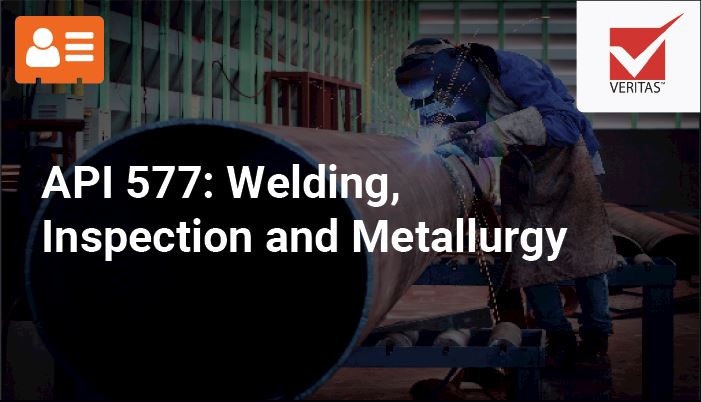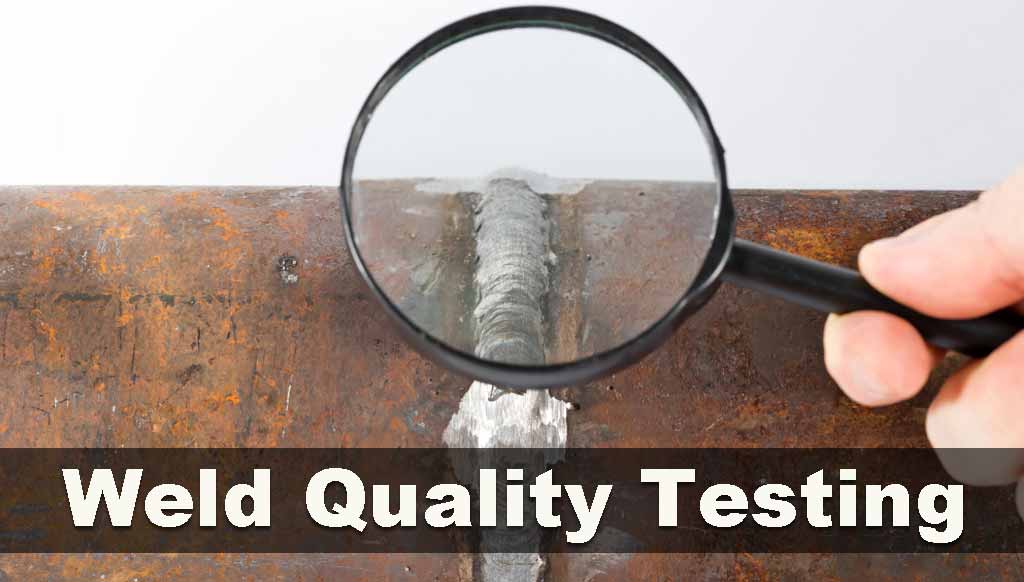Comprehending the Basics of Welding Examination to Make Certain Quality and Security
In the realm of contemporary engineering, welding evaluation stands as a keystone for making certain both the top quality and safety and security of architectural developments. The process involves a meticulous evaluation of bonded joints, utilizing sophisticated methods such as radiographic and ultrasonic testing to discover concealed flaws. The expertise of qualified assessors is essential, as they connect the space between theoretical standards and sensible application. Their duty expands beyond plain discovery, incorporating the documents and interaction of searchings for to relevant stakeholders. What are the nuances of these evaluation methods that make them essential for keeping architectural stability?

Relevance of Welding Inspection
In the realm of industrial fabrication, the relevance of welding examination can not be overemphasized. Welding assessment plays an important function in guaranteeing the integrity, safety and security, and long life of welded structures (Welding Inspection Madison).
The process of welding naturally entails intricate variables, including temperature, material buildings, and ecological conditions, all of which can influence the quality of the weld. A comprehensive examination recognizes problems such as cracks, porosity, and insufficient combination, which can compromise the strength and integrity of the weld. By finding these problems early, corrective activities can be taken, consequently decreasing the threat of failure and associated prices.
Furthermore, welding evaluation adds to regulative compliance, as lots of markets are governed by rigorous security standards and standards. Failure to adhere to these policies can cause economic fines and legal obligations. Ultimately, welding assessment not just safeguards physical structures yet also maintains and shields human lives industry track records.

Trick Welding Inspection Techniques
Although welding evaluation is crucial to ensuring the quality and safety and security of bonded structures, it is the specific approaches used that figure out the efficiency of the inspection procedure. Trick welding evaluation methods can be generally categorized into non-destructive screening (NDT) and damaging testing.
Ultrasonic and radiographic testing are extra sophisticated methods that allow assessors to examine the interior integrity of the weld. Ultrasonic screening utilizes high-frequency audio waves to find gaps, while radiographic testing utilizes X-rays or gamma rays to produce a photo of the weld's interior. Magnetic fragment screening and liquid penetrant screening are surface examination techniques used to situate surface and near-surface imperfections. On the other hand, destructive screening approaches include physically cutting the weld or damaging to evaluate its mechanical residential or commercial properties. These comprehensive assessment methods guarantee that welds fulfill market criteria and safety demands, thereby making sure architectural integrity and efficiency.
Function of Qualified Inspectors
Licensed assessors play a critical duty in the welding evaluation procedure, guaranteeing that all welds abide by rigorous market criteria and safety guidelines. Their proficiency is essential in determining defects or irregularities that might endanger the structural stability of a weld. By carefully taking a look at each weld, licensed inspectors help stop possible failings that could bring about unsafe accidents or pricey repairs.
To become licensed, examiners need to go through strenuous training and testing, which familiarizes them with numerous welding techniques, products, and testing approaches. This comprehensive understanding allows them to review weld high quality effectively and make notified judgments concerning their security and dependability. Moreover, certified inspectors excel in interpreting specs and plans, ensuring that the welding job lines up with the job's design needs.
An indispensable part of their function is to record their searchings for extensively, supplying a comprehensive document of the evaluation procedure. This documentation is vital for traceability and liability, offering as this a main document of compliance with market requirements. Certified examiners additionally play a key duty in promoting interaction in between task stakeholders, offering understandings and suggestions to enhance welding practices and end results. Their payment is important in preserving high levels of top quality and safety and security in welding operations.

Tools Utilized in Welding Examination
Welding examiners depend on a range of specialized tools to execute their responsibilities properly, ensuring each weld meets the essential standards. Amongst these tools, visual inspection help like multiplying glasses and mirrors are essential, allowing inspectors to carefully check out welds for surface issues such as splits, porosity, and undercut. Calipers and fillet weld evaluates are essential for measuring weld measurements to validate compliance with style requirements.
Advanced tools extend past aesthetic aids, consisting of non-destructive screening (NDT) tools. Ultrasonic testing tools are essential in identifying subsurface flaws, making use of acoustic waves to reveal inner suspensions without jeopardizing the weld's stability. Similarly, radiographic screening uses X-rays or gamma rays to catch pictures of a weld's interior, highlighting prospective defects.
Magnetic bit testing is one more crucial tool, particularly for finding surface and near-surface gaps in ferromagnetic products. By applying magnetic fields and ferrous bits, examiners can identify flaws that could otherwise be undetectable.
Dye penetrant evaluation is typically made use of for non-ferrous products, providing a contrast-enhanced visual check for surface-breaking problems. Welding Inspection Madison. Together, these tools allow welding assessors to adequately assess weld high quality, ensuring security and dependability in various applications throughout markets
Making Sure Architectural Honesty

Welding treatments need to abide by recognized criteria and codes, such as those defined by the American Welding Culture (AWS) or the International Company for Standardization (ISO) These standards ensure that the welds can endure functional stresses and ecological variables. Qualified and certified welders play an essential function in this process, as their experience makes certain that strategies are applied appropriately, decreasing defects such as cracks, porosity, and incomplete fusion.
Post-weld assessment is another essential element of validating architectural stability. Non-destructive testing (NDT) methods, consisting of ultrasonic testing and radiographic testing, are used click here now to discover subsurface flaws without jeopardizing the bonded structure. These examinations verify that the welds meet the needed top quality standards, supplying guarantee of their longevity and integrity. Ultimately, guaranteeing architectural integrity in welding not just safeguards human lives check my reference but likewise secures financial investments and enhances the durability of crafted structures.
Verdict
The fundamentals of welding examination are crucial for keeping the top quality and safety of welded frameworks. By carrying out essential examination methods, such as visual analyses and non-destructive screening, possible flaws that might endanger architectural stability are determined. Licensed examiners are critical in making sure compliance with sector requirements and reliable communication among stakeholders. Making use of specialized devices better improves the evaluation process, eventually securing human lives and lengthening the life-span of bonded building and constructions.
Welding examination plays an important duty in guaranteeing the stability, security, and long life of bonded structures.Although welding examination is important to making sure the quality and security of welded frameworks, it is the details methods used that identify the performance of the evaluation procedure. Secret welding inspection techniques can be generally classified into non-destructive testing (NDT) and harmful screening.Certified examiners play an essential duty in the welding inspection process, guaranteeing that all welds abide with stringent industry standards and security guidelines.The principles of welding inspection are important for preserving the high quality and safety and security of bonded frameworks.